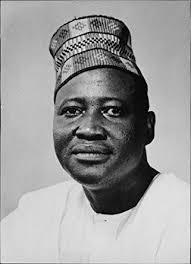The origin of mathematics has been subjected to several Eurocentric myths that seek to shred the African roots of a mathematical concept, however a careful study of historical fact, archaeological evidence, and artifacts, over the origination of mathematics from ancient Africa.
Mathematical expressions were developed from the concepts of numbering, counting, measuring and other basic numerical forms which weren’t foreign to ancient Africans. Prehistoric artifacts discovered in Africa, dated 25,000 years old or more suggest early attempts to quantify time.
The Lebombo bone discovered in the mountains of Swaziland and the Ishango bone, found near the headwaters of the Nile River (northeastern Congo), may be more than 25,000 years old and consists of a series of tally marks carved in the columns running the length of the bone. It is widely suggested that that the Ishango bone represents either the earliest known representation of prime numbers or a six-month lunar calendar.
The Lebombo bone discovered in the mountains of Swaziland and the Ishango bone, found near the headwaters of the Nile River, in northeastern Congo, may be more than 25,000 years old and consists of a series of tally marks carved in the columns running the length of the bone. It is widely suggested that that the Ishango bone represents either the earliest known representation of prime numbers or a six-month lunar calendar.
Other notched bones discovered in Africa are 80,000 years old or more but it is unclear if the notches are merely decorative or if they bear a functional meaning.
Furthermore, the systems of measurement used in the African forest kingdoms, and the mathematics used in building the great stone complexes of Zimbabwe, the great accuracy of the dimensions of the pyramids still gives rise to wonder and strengthens the evidential value of the African origin of mathematics.
Geometry, literally the measurement of the land, required a high technology in addition to theoretical mathematics. The famous “rope stretchers” used special ropes, twisted of many fine strands to assure high stability and constant length.
The accuracy of the Egyptian value for (the constant ratio of circumference to diameter of any circle) was probably a result of theoretical analysis of “squaring a circle” and confirmation of experiment and accurate measurement. The Egyptian value for pi was 3.16, much closer to the modern 3.14, gives credence to the African roots of mathematics.
THE LEBOMBO BONE:

The Lebombo bone is the world’s oldest recorded and proven measuring and mathematical device
The Lebombo bone is the world’s oldest recorded and proven measuring and mathematical device. The Lebombo bone is a bone tool made of a baboon fibula with incised markings discovered in the Lebombo Mountains located between South Africa and Swaziland. According to two dozen radiocarbon datings, the bone is said to be between 44,200 and 43,000 years old, apparently much older than the Ishango bone with which it is sometimes misplaced.
The bone known for its distinct 29 markings, is suggested to have been used to track either menstrual or lunar cycle, or used as a measuring/counting instrument. Interestingly, these suggestions emanate from the fact that the lunar cycle is roughly 29 days (29.531 days), which is proximate to the notched markings on the bone.
The notched pattern on the Lebombo bone consists of 14 by 14 dots, linked by two more dots. The dots at the top line, numbering 29 can be read as a lunar calendar. There are 30 spaces between and next to the 29 dots. The spaces and dots are read as follows: 30 spaces plus 29 dots plus 30 spaces plus 29 dots plus 30 spaces . . . , yielding 30 29 30 29 30 29 3029 30 29 30 29 30 29 30 . . . nights or 30 59 89 118 148 177 207 236 266 295 325 354 384 413 443 472 502 . . . nights for 1 2 3 4 5 6 7 8 9 10 11 12 13 1415 16 17 . . . lunations. There are 2 x 13 x 14 dots below the top line, yielding 364 days; add the dot in the middle of the bottom line and you obtain 365 days for a year (Gnaedinger, 2005).
To further validate the mathematical symbolization of the bone, history postulates that the Lebombo bone which is a product of the baboon’s fibula, a primate indigenous to Africa, was symbolically linked to Khonsu an ancient god that was linked with time. The Kemetic god, Djehuty (“Tehuti” or “Toth”), was later depicted as a baboon and is usually associated with the moon, math, writing, and science.
The use of baboon bones as mathematical devices have been historically proving to have existed throughout all of Africa, suggesting Africans always held the baboon as sacred and associated with the moon, math, and time.
THE ISHANGO BONE:

It is the oldest attestation of the practice of arithmetic in human history
The Ishango bone buried in layers of volcanic ashes on the shores of Lake Edward in the Ishango region of the present-day Democratic Republic of Congo was discovered by Belgian geologist Jean de Heinzelin de Braucourt in 1960. The bone which is a product f the fibula of a baboon has a sharp piece of quartz affixed to one end for engraving and is proven to be at least 25,000 years old. It is the oldest attestation of the practice of arithmetic in human history.
The bone just like the Lebombo bone also has a series of notches carved in groups. Although it was first thought that the notches are some kind of tally marks as found to record counts and measurement all over the world, it was however later determined that the groupings of notches on the bone are symbolic of mathematical concepts and they are much more than a simple tally.
The indications on the bone are distinguished by a collection of markings that represent different quantities. When the markings are counted, they are all odd numbers with the left column containing all prime numbers between 10 and 20, and the right column containing added and subtracted numbers. If both columns are calculated, they sum up to 60 (almost twice the length of the lunar or menstrual cycle).
The notches have been interpreted as a prehistoric calculator or a lunar calendar, or a prehistoric barcode.
Alexander Mar-shack a scholar conducted a detailed microscopic examination of the bone and found markings of different indentations, shapes, and sizes. His conclusion is that there is strong evidence of a close fit between different phases of the moon and the sequential notation contained on the bone.
He further suggests that the Ishango bone may have influenced the later development of mathematics in Egypt as, like some entries on the Ishango bone, Egyptian arithmetic also made use of multiplication by 2.
Geometrics:
According to Paul Gerdes, a scientist, and professor of mathematics, “the development of geometrical thinking started early in African history, as early humans learned to geometricize in the context of their labor activities.
For example, the hunter-gatherers of the Kalahari Desert in southern Africa learned to track animals, learned to recognize and interpret spoors. They got to know that the shape of the spoor provided information on what animal passed by, how long ago, if it was hungry or not.”
For example, the hunter-gatherers of the Kalahari Desert in southern Africa learned to track animals, learned to recognize and interpret spoors. They got to know that the shape of the spoor provided information on what animal passed by, how long ago, if it was hungry or not.”
Furthermore, the Tellem weavers of Mali experimented with dimensions and found relationships between the dimensions and the (symmetric) properties of the patterns that resulted. In particular, the variation among the discovered plain weave fragments suggests that the weavers knew the effect on the patterns of the selection of even and odd dimensions.
The Tellem weavers employed a variant of the plain weave, whereby in one direction double threads are used instead of single threads. In this way, the weavers were able to weave cloths with decorative and stripe patterns. The Tellem patterns from the 11th and 12th Centuries feature woven rectangles followed by fragments of respective plane patterns, which are two-color patterns in the sense that for each there is a rigid motion of the plane—translation, rotation, reflection.
Some of these activities have been argued to have influenced the study and development of geometrics dating back to ancient Egypt.
Follow the Neptune Prime channel on WhatsApp:
Do you have breaking news, interview request, opinion, suggestion, or want your event covered? Email us at neptuneprime2233@gmail.com




